Is it too late to protect what’s working as the cliff hits districts?
Next year’s school district budgets will be locked in this spring. After that, influencing spending for 24-25 gets a lot harder.
Closing schools: How much money does it save, and is it worth it?
School closure decisions are never easy. In this EdSource commentary, Roza and Dhammani outline several factors districts should consider in order to bring transparency to the process and ensure all students are served well.
The Grid: A Framework to Explore Budgeting Choices
This tool helps school, district, and state leaders strategically weigh investments by calculating per-student costs and spelling out desired results, risks involved, and how effectiveness will be measured.
Public Education Missed the Data Revolution. It’s Time to Catch Up
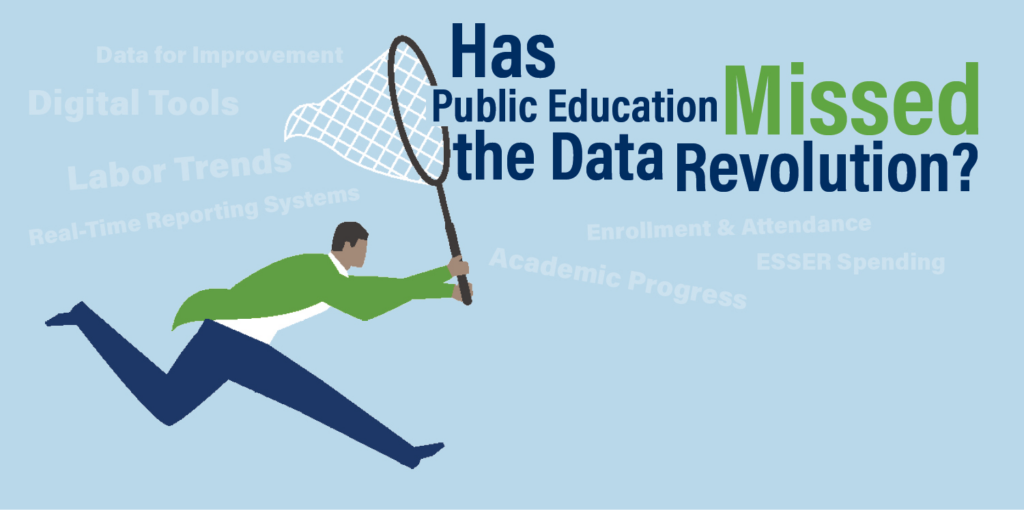
Data-free schooling means the system can’t learn as it goes and improve on what it does. It means students aren’t getting the full value from the nation’s investment in public schooling, write Marguerite Roza and Chad Aldeman. What can be done to chip away at this data desert?
Which schools are better at leveraging dollars for student outcomes?
We’ve created interactive data displays to compare student outcomes and spending by similarly situated schools to show which are beating the odds with the dollars they have.
NAEP scores are down. Funding is up. Wait, wut?
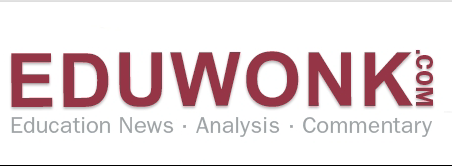
NAEP scores are going down or flat. People have different takes on why. In this Eduwonk blog, Marguerite Roza takes a look at the question of money.
The Big Bet on Adding Staff to Improve Schools Is Breaking the Bank

By going all-in on staffing, we’ve crowded out other potential investments that can positively impact student learning. In this paper, Marguerite Roza writes that competing strategies should be viewed through the lens of which can do the most for students with the limited dollars at hand.
The “Would You Rather?” Test
Education spending always involves choices, and smart choices require understanding value for the dollar. This paper uses the “would you rather” exercise to explore tradeoffs in school spending and think through the value of various cost-equivalent investments.
Equipping School Leaders to Spend Wisely
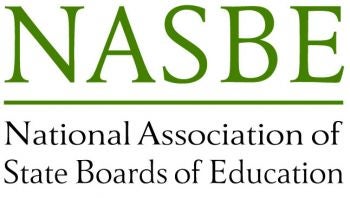
In this article in the National Association of State Boards of Education journal, The Standard, Marguerite Roza writes that financial transparency presents state boards of education with a timely opportunity to turn the tide on local leader training.
Funding Student Types: How states can mine their own data to guide finance policy on high-needs students

To help states design effective funding policies to serve high-needs students, this brief by Marguerite Roza helps states ask the right questions, tap their own data, and analyze funding in relation to student outcomes.
Webinar: What does the ESSA financial transparency requirement mean for districts?
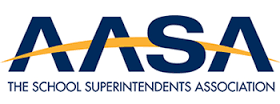
This webinar provides an overview of the financial transparency requirement in the Every Student Succeeds Act, highlight lessons learned from states working toward meeting the requirement, and provide a district lens for thinking about the opportunities this new data can provide.
Financial Transparency Reporting Requirement: Where to start
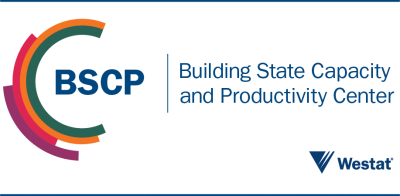
In this brief we describe our work with 22 state education agencies to identify data readiness to meet the financial transparency reporting requirement under the Every Student Succeeds Act (ESSA) and outline the inventory processes so other states can identify their own next steps to meet the requirement.
School-level spending: Financial transparency coming to every community in 2018
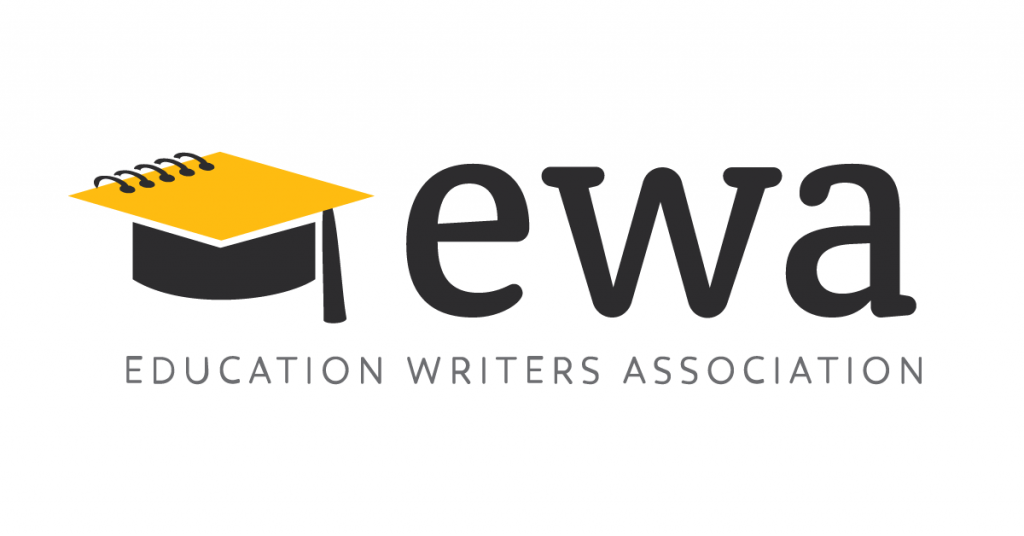
At the Education Writers Association National Seminar on June 2nd, hosted at Georgetown University in Washington, D.C., Marguerite Roza presented on new school spending reports emerging under the federal ESSA financial transparency requirement.
With New Data, School Finance Is Coming Out of the Dark Ages

In this blog and podcast, Marguerite Roza explains how a sleeper provision in the Every Student Succeeds Act (ESSA) will serve up a motherlode of new school-level financial data, offering an unprecedented opportunity to be better equipped to tackle some of education’s most pressing issues.
Productivity Improvements Paper Series

These five Rapid Response briefs model the costs of productivity improvements in K-12 education, including changes in staffing ratios, the impact of late-career teacher pay raises on pension debt, and paying the best teachers more to teach more students.
New Era of School Finance
In 2016 we convened leading authorities to discuss the complexities of education finance in light of the new Every Student Succeeds Act. Watch Marguerite Roza’s research presentation, US Secretary of Education Arne Duncan’s keynote, and an expert panel discussion of the shifting roles in education finance decisions.
Are public universities neglecting in-state students?

Marguerite Roza responds to an online “Room for Debate” conversation hosted by the New York Times, arguing that chasing after nonresident students threatens the very nature of public universities as institutions that serve the state.
Productivity is sometimes seen as a dirty word in education
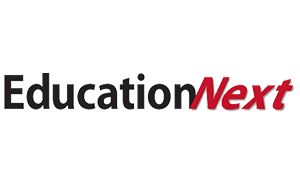
This article explores how school systems can improve productivity even when so much of what matters—the human variables and relationships in student learning—can’t be centrally managed and scaled across schools.
The Productivity of Rural Schools

Remote rural districts are often more expensive and yield lower student outcomes than urban and suburban districts. Yet some rural districts generate higher-than-expected learning results without proportionately higher spending. Based on interviews with leaders in 30 rural remote districts, Marguerite Roza identifies six factors that make some districts “productivity superstars.”
Advancing System Productivity Webinar Series
Edunomics Lab, in partnership with Council of Chief State School Officers and the Building State Capacity and Productivity Center, convened a Community of Practice to support a group of leaders in all states interested in developing a state-specific framework and strategy set related to the SEA’s role in increasing productivity. This series of five webinars is designed to help Regional Comprehensive Centers support state education agency (SEA) leaders as they explore how they can better support districts and schools to operate in a more productive way.
Meeting the ESSA Financial Transparency Reporting Requirement

On February 9, 2017 nearly 100 state and district leaders representing 36 states met in Washington, D.C. to explore the opportunities and work ahead to meet the financial transparency reporting requirement in ESSA. Available presentations are linked.
The Smart Money: Designing a school budget to get the most for your school dollar
In this hands-on workshop presented at NAIS national conference in March 2017 school leaders dove into the math of school resource allocation. Dr. Roza shared innovative financial strategies and how leaders could apply the concepts to their own school context.
Highly Productive Rural Districts: What is the Secret Sauce?

In this paper we identify some common themes that makes some remote rural districts “productivity superstars” and describe steps states can take to encourage and support district productivity.
Promoting Productivity: Lessons from Rural Schools

In this essay addresses the assumption that rural districts are less productive than their urban or suburban peers by discussing rural districts can “beat the odds” by increasing student results without increasing per-pupil expenditures.
Turning a Benefits Conundrum into a Potential Opportunity for Teachers and Students

This analysis shows how a longer work year could increase teachers’ annual salaries and improve student outcomes.
Is spending more on education the best way to improve schools and teaching?

Marguerite Roza’s response to the NY Times Room for Debate question ~ Is spending more on education the best way to improve schools and teaching?
Title I: Time to Get It Right
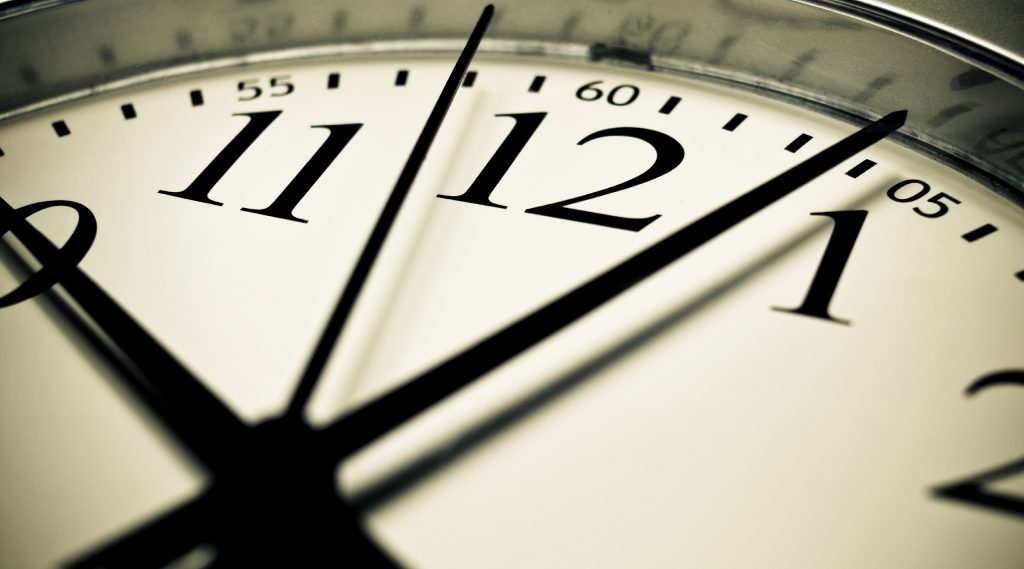
In this brief on the landmark federal law’s 50th anniversary, we offer five key principles to help policymakers revise Title I so that it fulfills its promise of augmenting funding for poor students.
Paying the Best Teachers More to Teach More Students

In this analysis we find how allowing our best teachers to teach more students in lieu of hiring additional staff could offer significant teacher bonuses. Findings are modeled state-by-state.
Innovation Amid Financial Scarcity: The Opportunity in Rural Schools

In this paper we explore spending and outcomes data of rural schools and highlight policy implications for states seeking improved outcomes for all their districts in the context of limited resources.
The Phantom Menace: Policies that Protect Districts from Declining or Low Enrollments, Drive Up Spending and Inhibit Adaptation

This paper examines the practice of states funding school districts for students who do not attend school there. Aimed at “protecting” districts from enrollment fluctuations, the practice drives up spending and inhibits adaptation.
The Real Deal on K-12 Staffing

This analysis finds that staffing ratios across K-12 education have risen precipitously over several decades and, despite the impact of the Great Recession, remain at 2004 levels. A state-by-state comparison reveals large disparities across states.
Building SEA Productivity
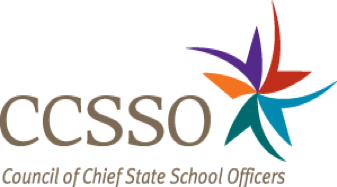
In this presentation state education chiefs heard about a basic framework for leading the productivity challenge that includes building a productivity data infrastructure, prioritizing flexibility, aligning funds with students, incentivizing innovation, and leading the change.
A State Information System to Support Improvements in Productivity

In this paper, we discuss how states can (and why they should) track and share school-level outcomes relative to school-level spending in their online information systems. Some schools are far more productive than others—getting better student results for less money—yet states are not yet routinely identifying such schools.
SEA of the Future: Building the Productivity Infrastructure

This publication introduces the “productivity infrastructure” the building blocks for an SEA committed to supporting productivity, innovation, and performance—from the state chief to the classroom.
Webinar: Training Principals for Budgeting at the School Level

In this webinar and presentation, we share seven key steps for principals to customize their use of resources based on student outcomes goals and needs. This includes concrete budget strategies and hands-on exercises to help principals understand and weigh cost and tradeoff scenarios.
Civic Vitality and Public Education Productivity: The Harbormaster Mayor

In this brief, we argue that mayors, as the person responsible for a municipality’s overall well-being, are uniquely positioned to identify and promote productive school models and advocate for all students, regardless of what type of school they attend.
Webinar: Building a State Information System to Support Improvements in Productivity
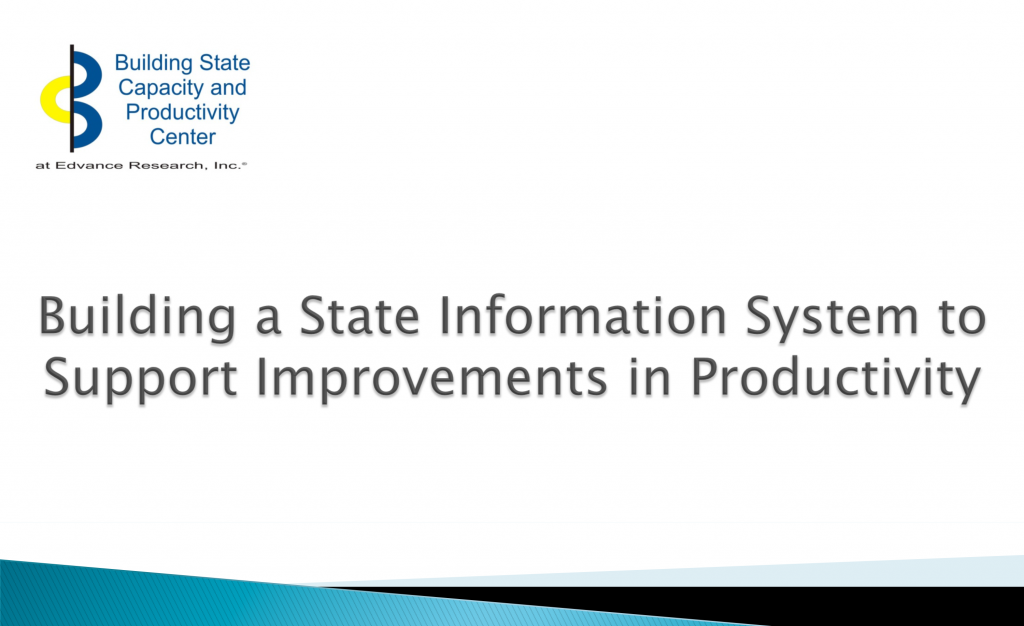
On February 26, 2016 Marguerite Roza conducted a webinar for state education agency leaders. This webinar explored how SEAs can build an information system designed to drive productivity – what data are needed, how to compile the data into useful resources for leaders at every level of education and how these stakeholders can use the data to drive decision making and advance productivity.
Options for NY State in an Era of Constrained Resources

At a public symposium of the NY Education Reform Commission, Marguerite Roza presented on “Maximizing Resources for Student and School Success.”
The SEA of the Future: Prioritizing Productivity

In this volume of The SEA of the Future, Marguerite Roza co-authored two essays examining how state leaders, challenged with having to make decisions on how to use limited resources, are faced with an uneasy zero-sum game: every dollar they put into one program is a dollar not spent in another.
Teacher Retirement Benefits: Defining a More Active Role for SEAs and Their Chiefs

In this essay from The SEA of the Future Volume 2, Marguerite Roza and Michael Podgursky look in depth at the startling long-term costs of educator pension systems and the counterproductive employment incentives embedded in these systems.
Leveraging Productivity for Progress: An Imperative for States

In this essay published in The SEA of the Future Volume 2, Marguerite Roza makes the case for why productivity is essential to improving outcomes for students.
Funding Phantom Students

This brief describes a common practice that inhibits both efficiency and productivity: funding students who do not actually attend school in funded districts and how this is often overlooked by state leaders.
How Current Education Governance Distorts Financial Decisionmaking

In this chapter, Roza assesses the strengths and weaknesses of what remains of the old in education governance, scrutinizes how traditional governance forms are changing, and suggests how governing arrangements might be further altered to produce better educational outcomes for children.
Innovating Toward Sustainability: How Computer Labs Can Enable New Staffing Structures, and New Savings

Using wage and staffing data from states, authors project the financial and staffing implications of one innovative school model (the Rocketship lab rotation) to highlight potential impacts on the schooling workforce and total per-student spending.
The Opportunity Cost of Smaller Classes: A State-By-State Spending Analysis

This brief provides a state-by-state context by computing the dollars at stake in marginally raising the number of students per class.
The Sheepskin Effect and Student Achievement: De-emphasizing the Role of Master’s Degrees in Teacher Compensation

This brief dissects the nation’s sizable investment in master’s bumps as a means of highlighting policy obstacles to a more smartly differentiated compensation approach.
Rethinking State Education Finance Toward Greater Productivity

This presentation framed how state legislators might think differently about their investment in education to maximize scarce state dollars and improve student achievement.
Stretching the School Dollar: A Brief for State Policymakers

This policy brief lists fifteen concrete ways that states can “stretch the school dollar” in these difficult financial times.
Washington State High Schools Pay Less for Math and Science Teachers than for Teachers in Other Subjects

This paper examines the reasons why math and science teachers struggle to reach the same salaries as others, concluding that the state-wide salary schedule is in part to blame.
Curing Baumol’s Disease: In Search of Productivity Gains in Public Education
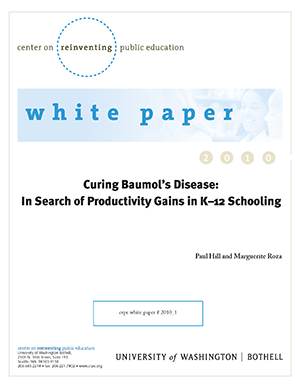
The authors discuss several areas in which labor-intensive businesses have improved productivity, but are absent in education. They conclude with a five-step agenda for finding the cure for Baumol’s disease in public education.
Breaking Down School Budgets: Following the Dollars into the Classroom

This analysis examines ways in which per-pupil spending in high schools varies by subject and course level, and demonstrates how isolating spending on discrete services can have a variety of benefits.
The Disproportionate Impact of Seniority-Based Layoffs on Poor, Minority Students

A study of California’s 15 largest districts indicates that “last in, first out” policies disproportionately affect the programs and students in their poorer and more minority schools than in their wealthier, less minority counterparts.
Educational Economics: Where Do School Funds Go?
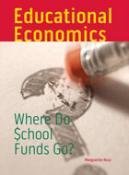
This book explains how varied funding streams can prevent schools from delivering academic services that mesh with their stated priorities and offers concrete prescriptions for reform.
K–12 Job Trends Amidst Stimulus Funds: Early Findings

This brief explores trends in K–12 education jobs—those funded through the stimulus and by other means—to answer the question of what role ARRA played in overall education employment.
Have States Disproportionately Cut Education Budgets During ARRA? Early Findings

This analysis explores how state education spending has changed or will change given the application of the State Fiscal Stabilization Fund, a policy intended to stabilize state budgets and avert cuts to education.
Now is a Great Time to Compute the Per-Unit Cost of Everything in Education

This paper examines how calculating the per unit costs of what schools or districts can deliver can provide the best insight into the implications of all that spending.
Seniority-Based Layoffs Will Exacerbate Job Loss in Public Education
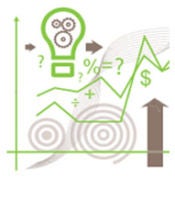
This brief details why K-12 school districts that lay off personnel according to seniority cause disproportionate damage to their programs and students than if layoffs were determined on a seniority-neutral basis.
What is the Sum of the Parts? How Federal, State, and District Funding Streams Confound Efforts to Address Different Student Types
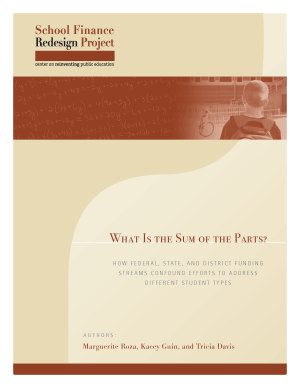
The authors demonstrate in greater detail than ever before how America’s methods of school finance work against a single-minded focus on student learning.
A Cost Allocation Model for Shared District Resources: A Means for Comparing Spending Across Schools
It can be difficult to assess how resources are distributed between schools, and whether every school is afforded the same opportunities to meet its educational goals. This paper addresses one key driver of spending variation between schools: shared district resources.

